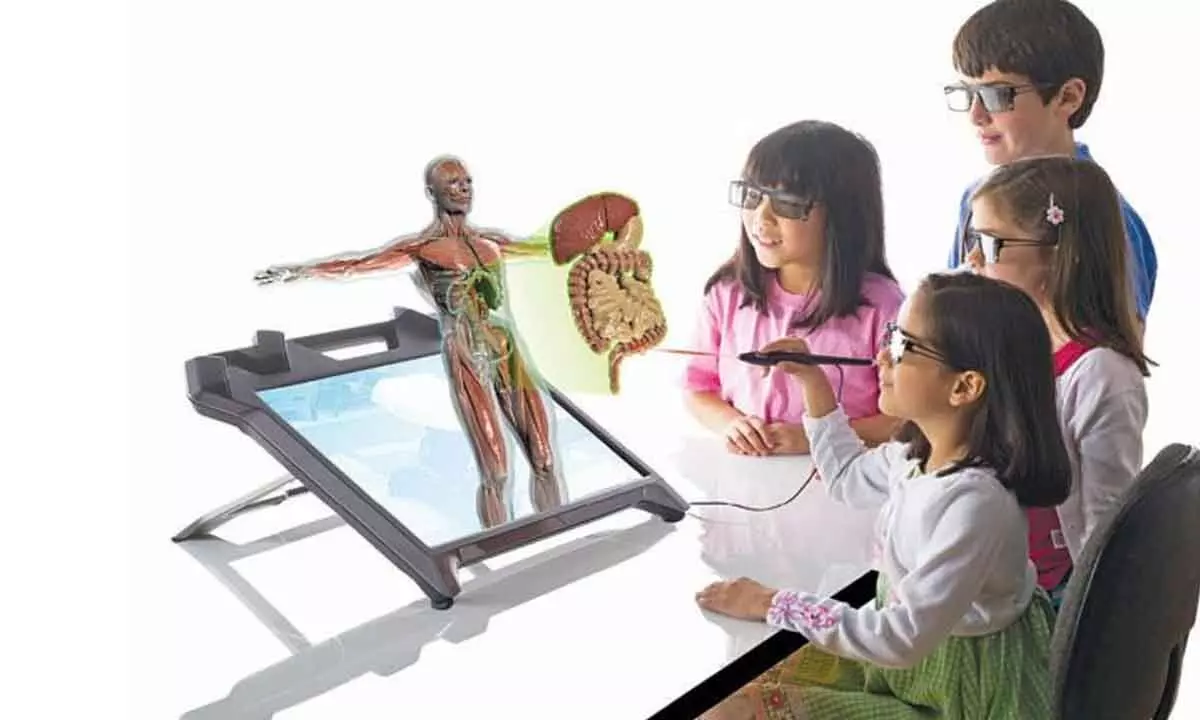How AR & VR is transforming classrooms across subject

AR and VR represent a paradigm shift in education. By fostering immersive learning experiences, boosting engagement, promoting accessibility, and nurturing valuable 21st-century skills, these technologies have the potential to revolutionize how we learn and teach across all subjects. As AR and VR technologies continue to evolve and become more affordable, we expect them to play an increasingly central role in shaping the future of education
The landscape of education is undergoing a significant shift in the last couple of years. Augmented reality (AR) and virtual reality (VR) technologies are no longer relegated to the realm of science fiction; moreover, they are actively transforming classrooms, injecting a new level of engagement and interactivity into the learning process. In this article, we will explore the transformative potential of AR & VR across various subjects and highlight the benefits they offer for students and educators.
Immersive Learning Experiences:
One of the most compelling advantages of AR and VR is its ability to create immersive learning experiences. In history classes, for instance, VR simulations can transport students to the heart of historical events, allowing them to witness battles firsthand or walk the halls of ancient civilizations. It fosters a deeper understanding of the past than traditional textbooks or documentaries can achieve.
Similarly, AR can bring science concepts to life. Imagine students dissecting a virtual frog in biology class, manipulating 3D models of molecules in chemistry, or exploring the human body’s inner workings in anatomy. These interactive approaches can enhance comprehension and ignite a sense of curiosity and wonder in students.
Boosting Engagement and Motivation:
Traditional classroom environments sometimes struggle to capture students’ attention, especially in today’s digital age. AR and VR, with its interactive and visually stimulating nature, addresses this challenge head-on. Students are more likely to be engaged when actively participating in their learning, manipulating virtual objects, and exploring new worlds. This increased engagement translates to improved focus, enhanced knowledge retention, and a more positive attitude towards learning.
Promoting Accessibility and Differentiation:
AR and VR can potentially revolutionize education for students with special needs. VR simulations can provide safe and controlled environments for students with anxiety or phobias to practice social skills or confront their fears. AR tools can overlay text with audio descriptions or translate languages in real time, catering to diverse learning styles and promoting inclusivity.
Furthermore, AR and VR allows educators to tailor their lessons to individual student needs. VR simulations can be adjusted to different difficulty levels, while AR tools can provide supplementary information based on a student’s progress. This personalized approach ensures that all students are challenged and supported in their learning journey.
Collaboration and Communication Skills:
While AR/VR excels at individual learning experiences, it fosters collaboration and communication skills. Students can participate in virtual field trips together, collaborate on building 3D models in AR, or engage in discussions within VR simulations. These collaborative activities encourage teamwork, critical thinking, and effective communication which are essential skills for success in the 21st-century workplace.
Conclusion:
AR and VR represent a paradigm shift in education. By fostering immersive learning experiences, boosting engagement, promoting accessibility, and nurturing valuable 21st-century skills, these technologies have the potential to revolutionize how we learn and teach across all subjects. As AR and VR technologies continue to evolve and become more affordable, we expect them to play an increasingly central role in shaping the future of education.
(The author is Founder & CEO of Motion Education)
















